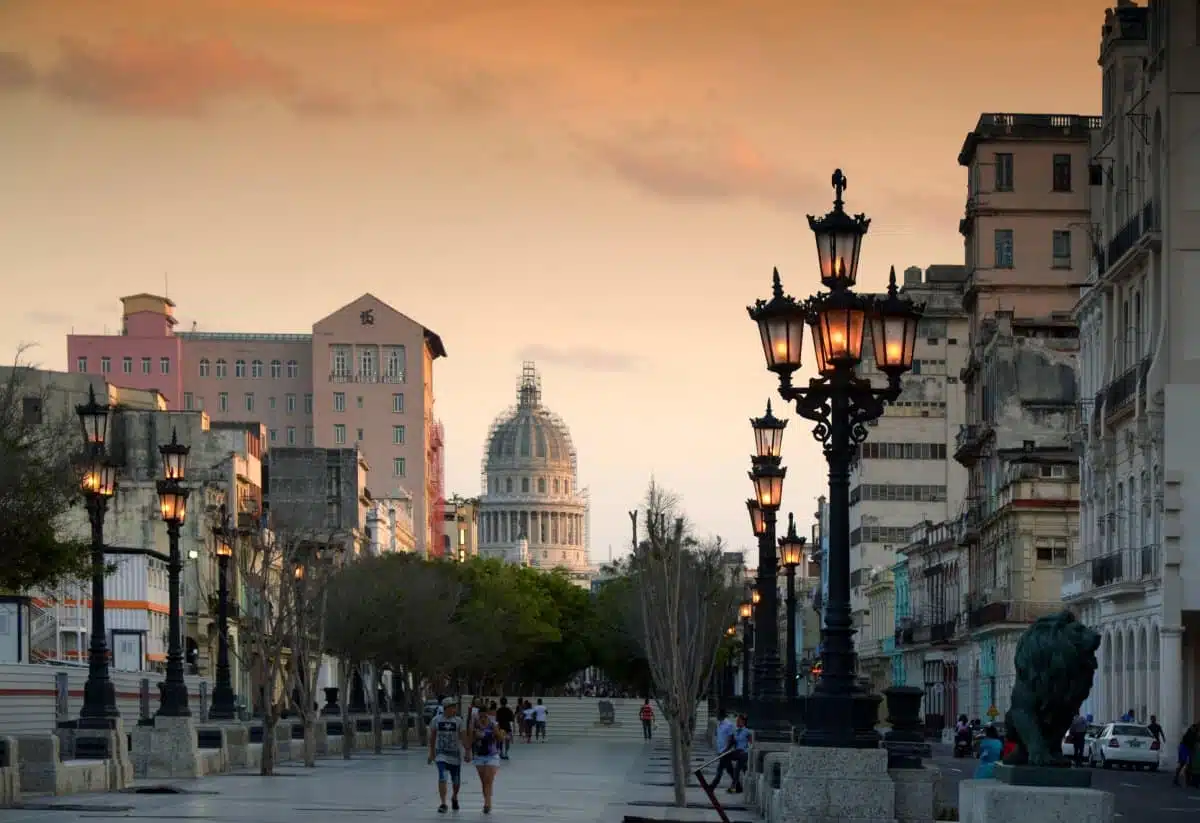Havana, the capital city of Cuba, is a living museum encapsulating the essence of its colonial past amidst a vibrant contemporary culture. With its historic cars, colorful buildings, and rich musical heritage, this city offers a unique blend of old-world charm and dynamic street life. Havana’s architecture blends Spanish colonial buildings, revolutionary landmarks, and modernist influences, making it a UNESCO World Heritage site. The city’s cultural landscape is equally diverse, characterized by its legendary cigar factories, rum distilleries, and a music scene that has given birth to some of the world’s most enduring genres. This guide aims to provide an insider’s view into the heart of Havana, exploring its key attractions, hidden gems, and offering tips to navigate the city like a local.
A Brief History
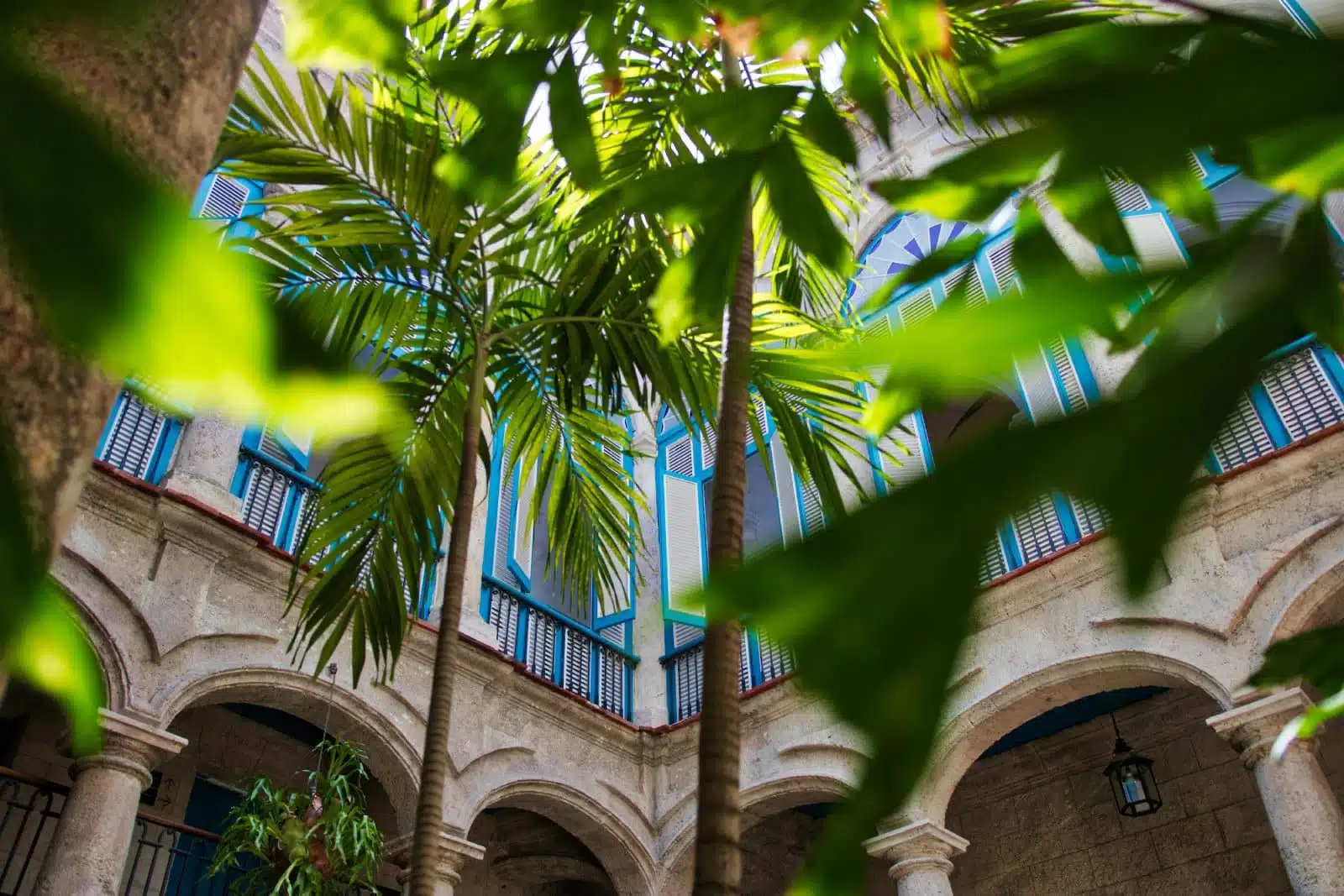
Image Credit: Pexels / Matthias Oben
Before the arrival of Christopher Columbus in 1492, Cuba was inhabited by indigenous peoples, including the Taíno and Ciboney. The Spanish colonization began in the early 16th century, led by Diego Velázquez de Cuéllar, who established settlements. The indigenous population faced severe exploitation and decline due to diseases and forced labor under Spanish rule.
Cuba became a vital part of the Spanish Empire, serving as a key port for ships involved in the transatlantic trade, including the slave trade. Sugar and tobacco plantations became the backbone of the Cuban economy, relying heavily on African slave labor. The island’s strategic location made it a valuable colonial possession, which Spain managed to retain despite several attempts by other European powers to capture it.
The 19th century was marked by increasing unrest and the struggle for independence from Spanish rule. The Ten Years’ War (1868-1878) and the Little War (1879-1880) were early attempts at gaining independence, which, despite their failure, sowed the seeds for future rebellion. José Martí, a Cuban national hero, played a crucial role in the fight for independence, leading to the Cuban War of Independence in 1895.
The United States entered the conflict in 1898 following the explosion of the USS Maine in Havana Harbor in what became known as the Spanish-American War. Spain was defeated, and in the Treaty of Paris, it relinquished control over Cuba, Puerto Rico, the Philippines, and Guam to the US. Cuba technically gained independence in 1902 but remained under significant US influence, highlighted by the Platt Amendment, which allowed the US to intervene in Cuban affairs.
The early 20th century saw Cuba achieve some economic growth, but the country was plagued by political instability, corruption, and continued US interference. The rise of Fulgencio Batista through a military coup in 1952 set the stage for the Cuban Revolution. Led by Fidel Castro, Che Guevara, and other revolutionaries, the movement successfully overthrew Batista’s government in 1959.
Castro’s establishment of a socialist state led to significant social reforms but also to the exodus of many Cubans and strained relations with the United States, culminating in the Bay of Pigs Invasion in 1961 and the Cuban Missile Crisis in 1962. Cuba became closely aligned with the Soviet Union during the Cold War, relying heavily on Soviet economic support.
The collapse of the Soviet Union in 1991 plunged Cuba into an economic crisis, leading to periods of severe hardship known as the “Special Period.” Despite these challenges, the government maintained its commitment to socialism, emphasizing healthcare and education.
Fidel Castro’s brother, Raúl Castro, took over in 2008, initiating a gradual process of economic and social reforms to modernize the Cuban economy while maintaining the socialist framework. The restoration of diplomatic relations with the United States in 2015 marked a significant shift, although the future of US-Cuban relations remains uncertain, especially with the tightening of the US embargo under subsequent administrations.
1. Old Havana (Habana Vieja)
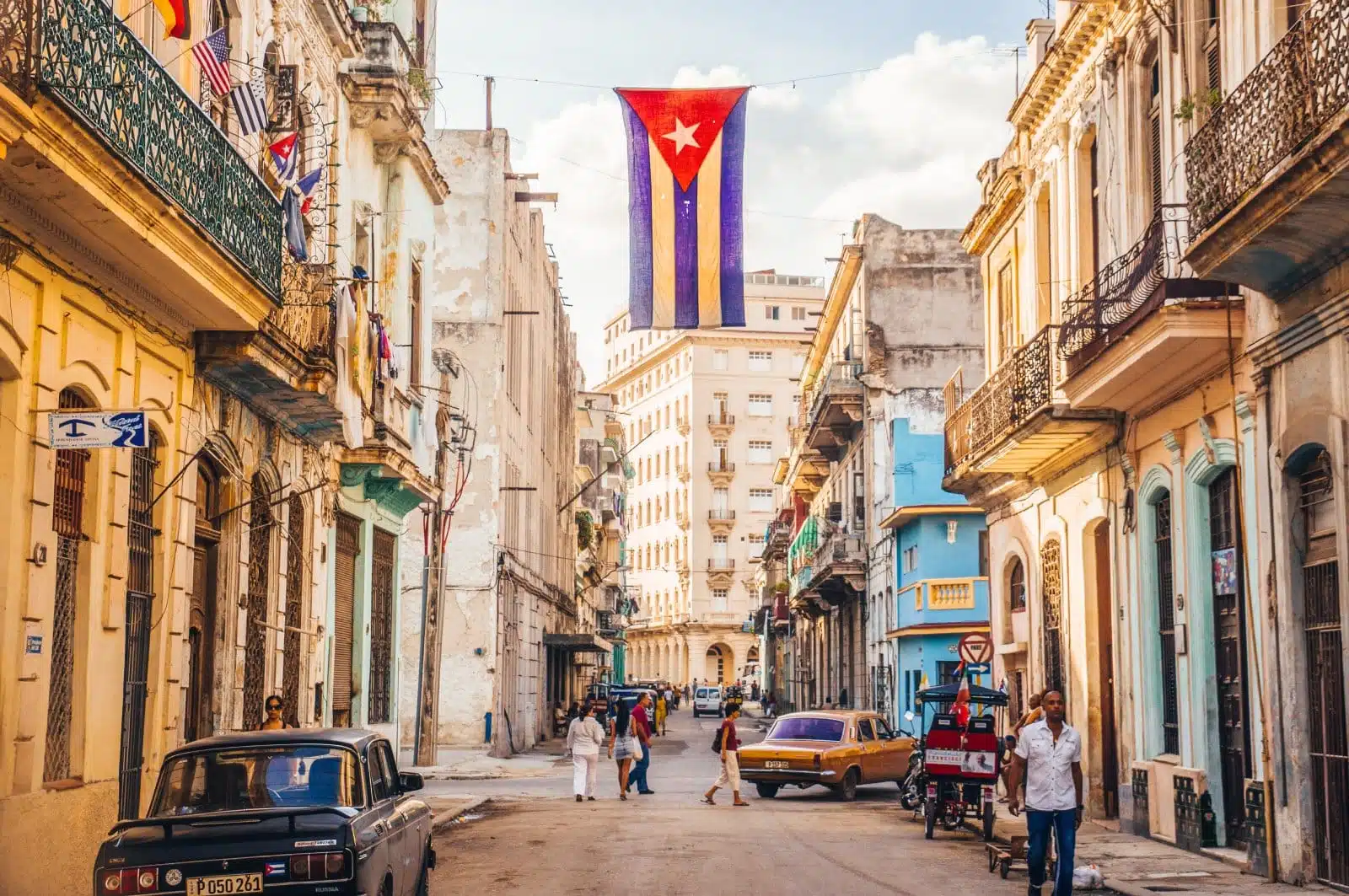
Image Credit: Shutterstock / Julian Peters Photography
Old Havana, the city’s historic core, is a labyrinth of narrow streets, sprawling plazas, and opulent colonial-era buildings. This area highlights Havana’s rich history, dating back to its founding in the 16th century. Visitors can explore iconic landmarks such as the Catedral de San Cristobal, the Plaza de Armas, and the Castillo de la Real Fuerza. The area is also home to numerous museums, galleries, and cafes, offering a glimpse into Cuba’s cultural and revolutionary past.
Insider’s Tip: Venture beyond the main plazas to discover lesser-known corners of Old Havana, where local life unfolds away from the tourist crowds. Callejón de Hamel, a vibrant alleyway adorned with Afro-Cuban murals and installations, offers an authentic slice of Havana’s artistic spirit.
When to Travel: The best time to visit Old Havana is between November and April, when the weather is cooler and less humid, making it ideal for exploring the city on foot.
How to Get There: Old Havana is easily accessible by taxi or public transport from any part of the city. However, walking is the best way to experience its charm, allowing for unplanned discoveries along its cobblestone streets.
2. Malecón
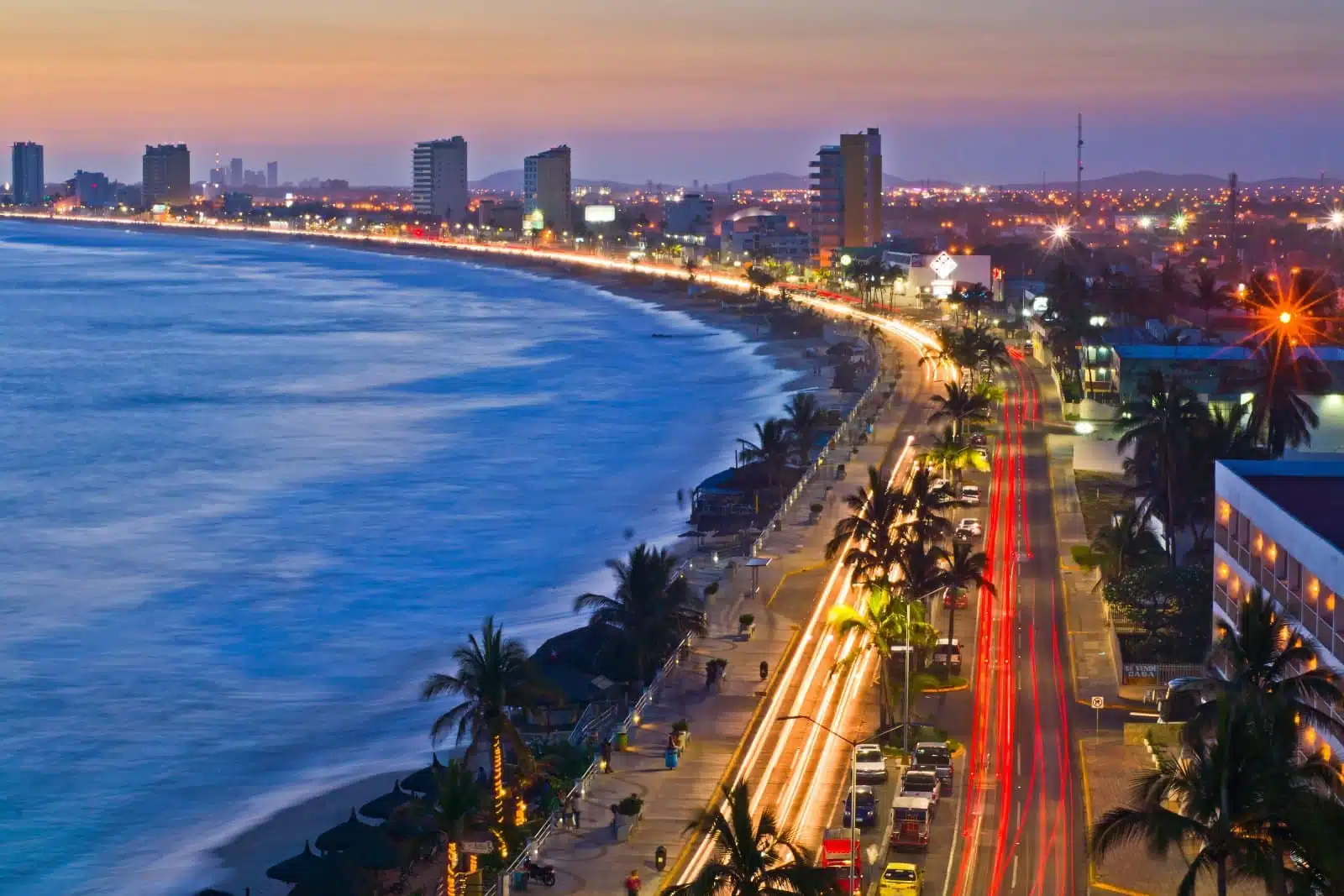
Image Credit: Shutterstock / photomatz
The Malecón, Havana’s iconic seaside boulevard, stretches for 8 kilometers along the coast, offering breathtaking views of the Gulf of Mexico. It’s a popular spot for locals and tourists, serving as a social hub where people gather to fish, play music, and watch the sunset. The Malecón is also famous for its architectural diversity, featuring buildings from various eras, from Art Deco to Neo-Moorish.
Insider’s Tip: For a unique experience, visit the Malecón at dawn or dusk. These times provide the best light for photography and capture the essence of Havana’s social life, as the city wakes up or winds down.
When to Travel: The Malecón is accessible year-round, but visiting during the dry season (November to April) ensures pleasant weather for long walks along the seafront.
How to Get There: The Malecón runs along the northern edge of Havana and is easily reachable from the city center by foot, taxi, or a classic car tour.
3. Fusterlandia
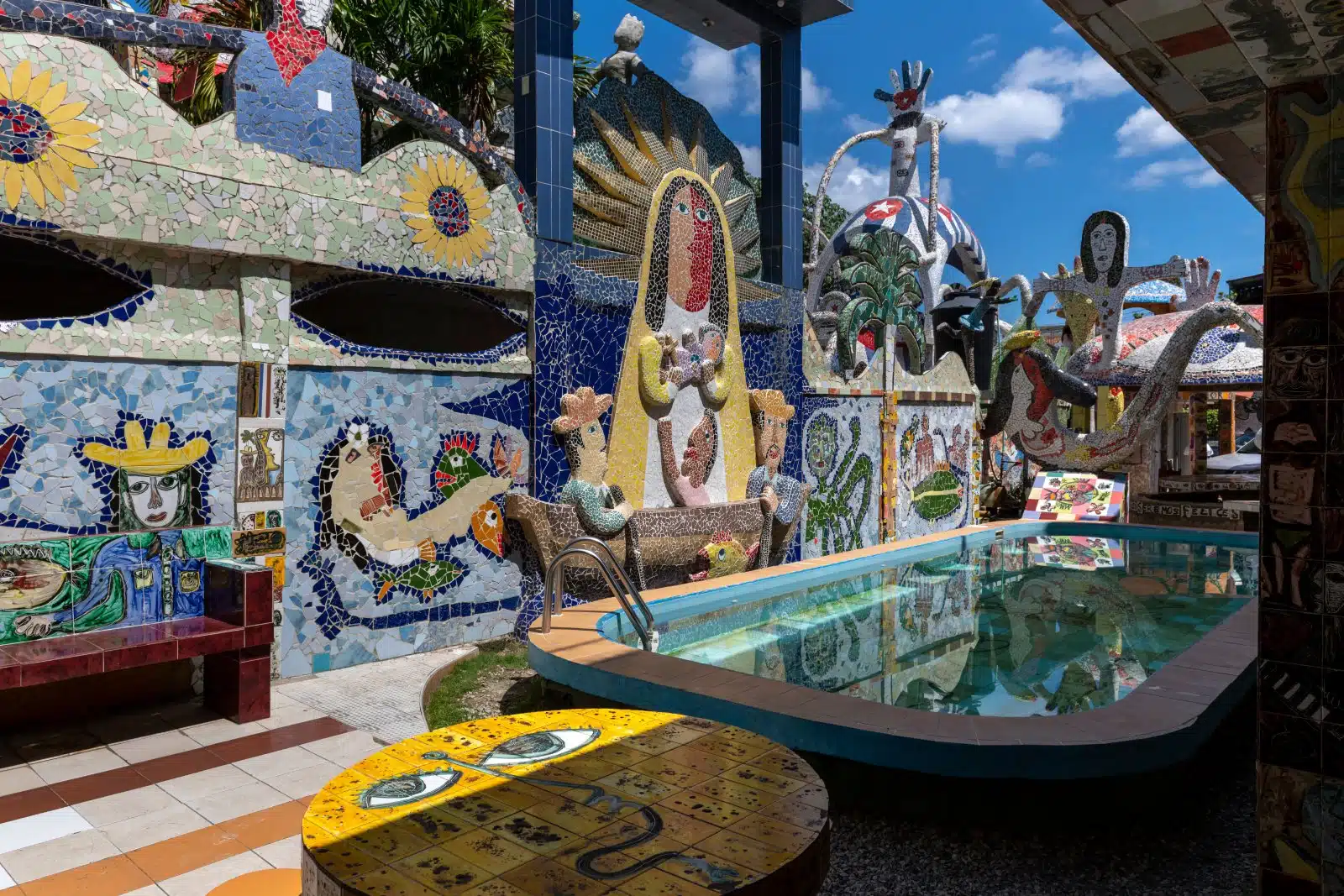
Image Credit: Shutterstock / Cinematographer
Fusterlandia, located in the Jaimanitas neighborhood, is the creation of Cuban artist José Fuster, who transformed his home and the surrounding area into a vibrant, Gaudí-esque mosaic wonderland. This public art project has grown to encompass several blocks, featuring whimsical sculptures, murals, and buildings adorned with colorful tiles. Fusterlandia offers a glimpse into Cuba’s contemporary art scene while fostering a sense of community and creativity.
Insider’s Tip: Engage with the local residents to hear personal stories about the neighborhood’s transformation and gain insights into the project’s impact on the community.
When to Travel: Visit Fusterlandia during the week to avoid the crowds and have more opportunities to interact with the artist’s collaborators who continue his work.
How to Get There: Fusterlandia is situated in the outskirts of Havana. The most convenient way to visit is by taxi, allowing flexibility in exploring this unique artistic enclave.
4. Museo Nacional de Bellas Artes
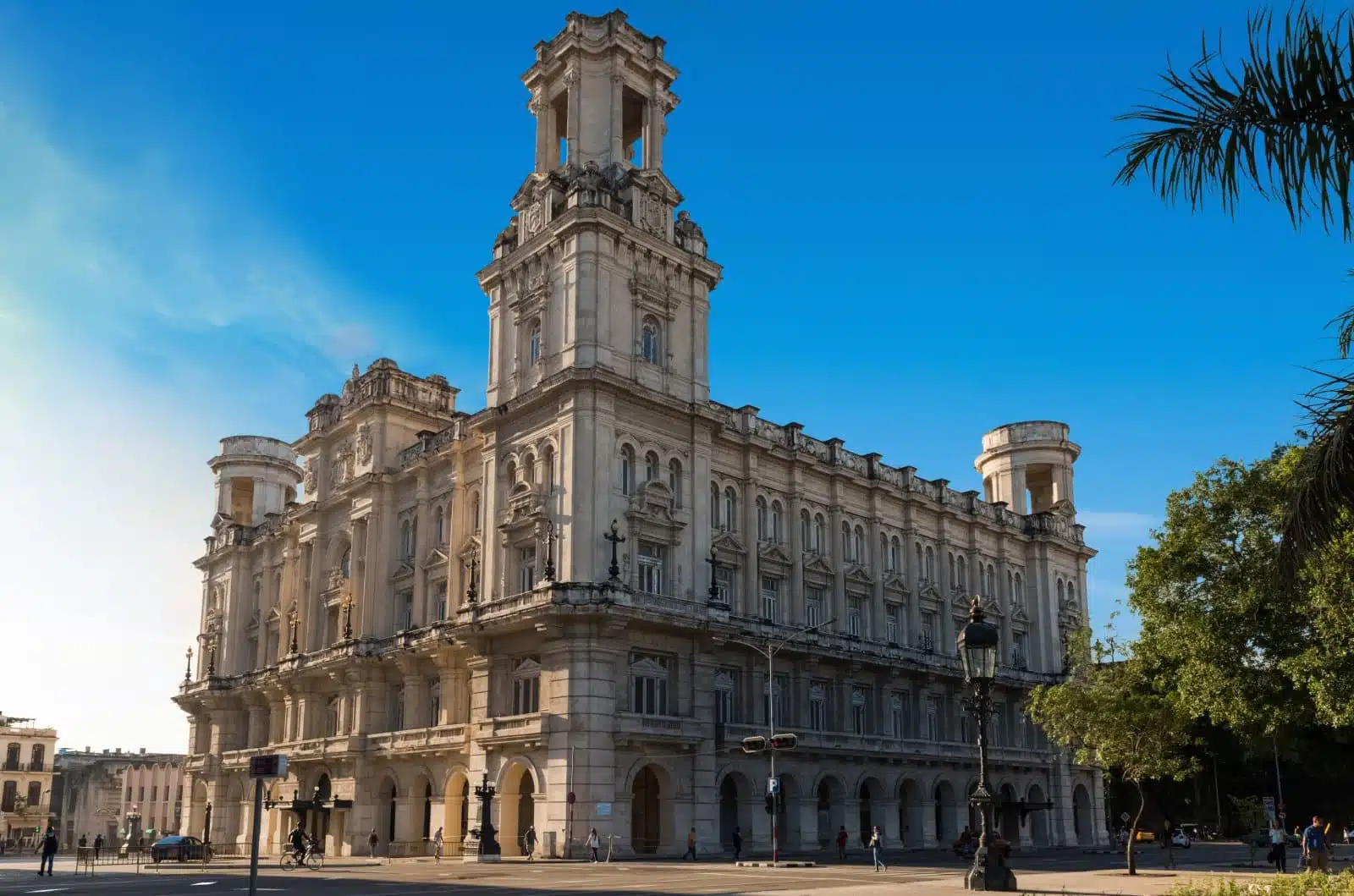
Image Credit: Shutterstock / possohh
The Museo Nacional de Bellas Artes (National Museum of Fine Arts) in Havana is a treasure trove of Cuban art, spanning from colonial times to the present day. Housed in two separate buildings, one dedicated to Cuban arts and the other to international art, the museum offers a comprehensive overview of the island’s rich artistic heritage. The Cuban collection, in particular, provides deep insights into the nation’s history and cultural identity through works by key figures in Cuban art.
Insider’s Tip: Allocate enough time to explore both museum buildings, starting with the Cuban art collection to better understand the context before moving on to the international exhibits. Don’t miss the works of Wifredo Lam, a pivotal figure in Cuban modern art.
When to Travel: The museum is open year-round, but visiting on a weekday morning can offer a more tranquil experience, allowing you to engage more deeply with the art.
How to Get There: Located in the heart of Havana, the museum is easily accessible by taxi or public transport. It’s also within walking distance of many central hotels and other cultural attractions.
5. El Capitolio
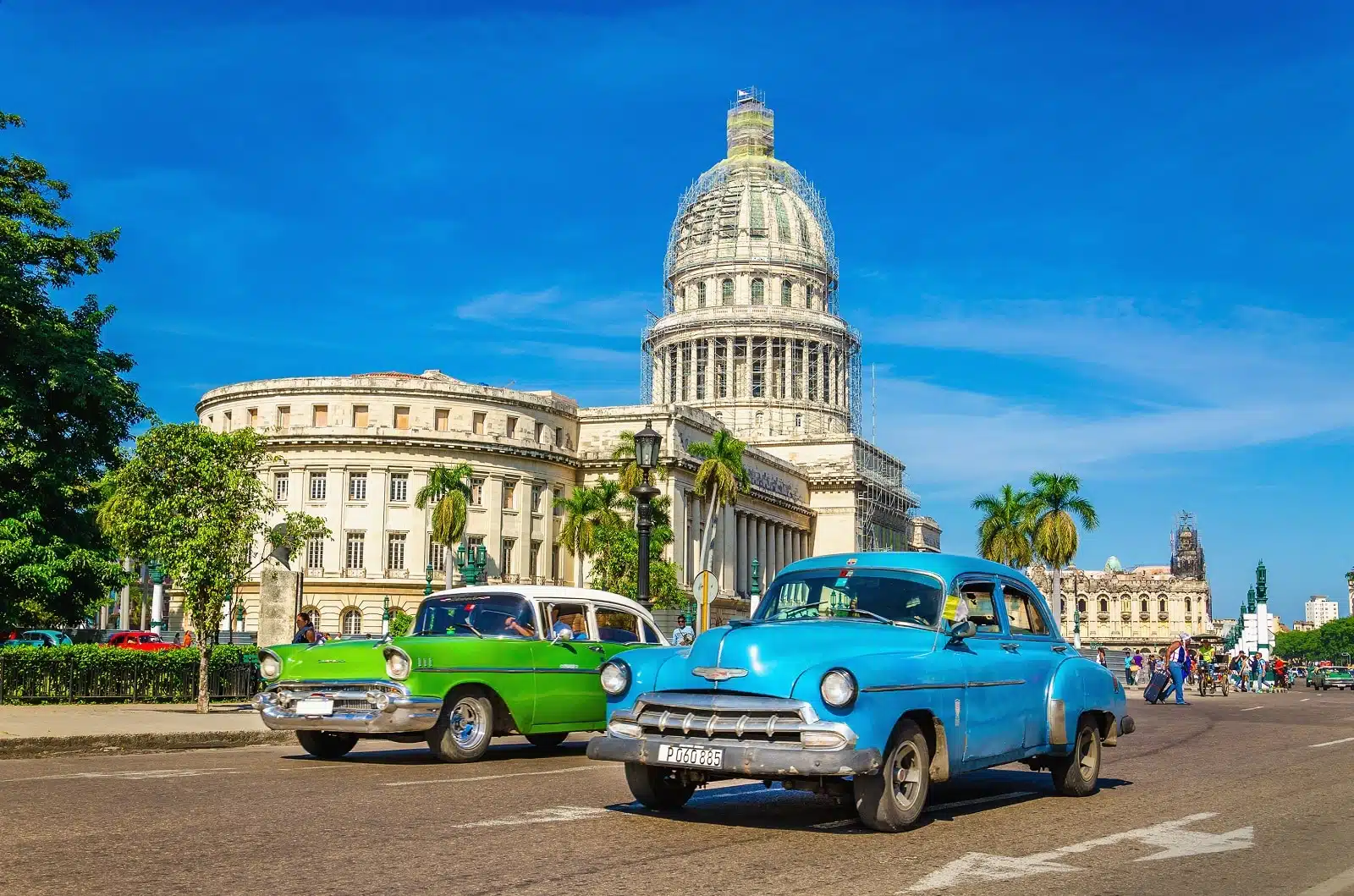
Image Credit: Shutterstock / Anna Jedynak
El Capitolio, or the National Capitol Building, is one of Havana’s most iconic landmarks. Inspired by the U.S. Capitol, it has been a symbol of political and social life in Cuba since its completion in the 1920s. Following a comprehensive restoration, El Capitolio has regained its former glory, with its imposing façade and opulent interiors, including the Hall of Lost Steps and a replica of the Statue of the Republic, one of the largest indoor statues in the world.
Insider’s Tip: For a unique perspective, visit the Capitolio at night when its neoclassical façade is beautifully illuminated, highlighting its architectural details and adding a mystical aura to the surroundings.
When to Travel: The Capitolio can be visited throughout the year, but the cooler months from November to April offer more comfortable conditions for exploring the surrounding areas.
How to Get There: Situated in central Havana, El Capitolio is easily reachable on foot from many parts of the city, making it a convenient stop on any walking tour of Havana’s landmarks.
6. Plaza de la Revolución
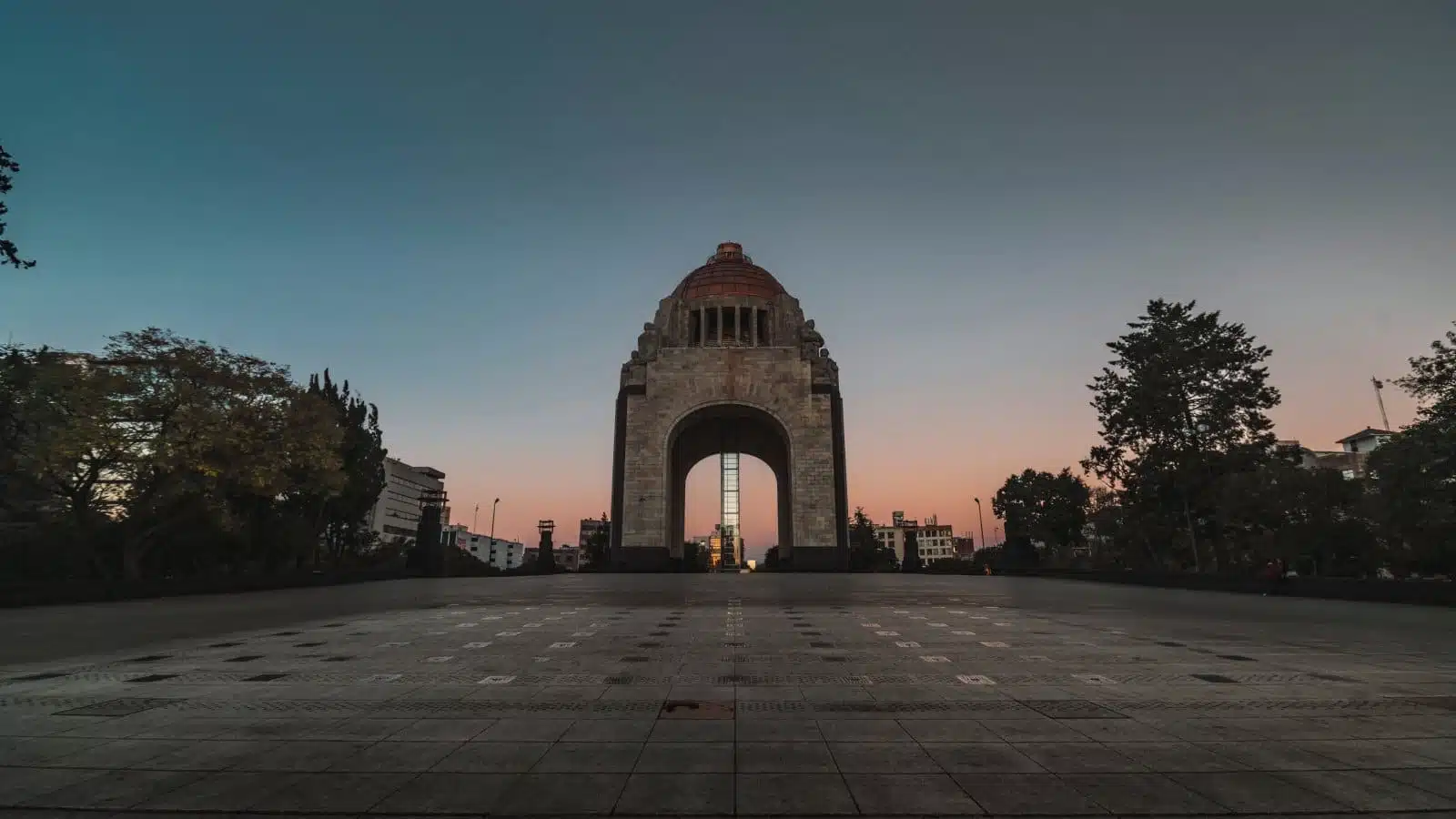
Image Credit: Shutterstock / Osvaldo Cedillo
The Plaza de la Revolución is a vast square known for its political significance and as the venue for major national celebrations and speeches. Dominated by the José Martí Memorial and flanked by iconic images of Che Guevara and Camilo Cienfuegos, the plaza is a powerful symbol of Cuba’s revolutionary history and aspirations.
Insider’s Tip: Climb to the top of the José Martí Memorial for panoramic views of Havana. From this vantage point, the perspective offers a unique understanding of the city’s layout and the plaza’s monumental scale.
When to Travel: Early morning or late afternoon visits to the Plaza de la Revolución are advisable to avoid the midday heat and to capture the best light for photography.
How to Get There: The plaza is located outside the city center, best accessed by taxi or a guided tour, which often includes insights into Cuba’s revolutionary history and the significance of the site.
7. Hemingway’s Havana
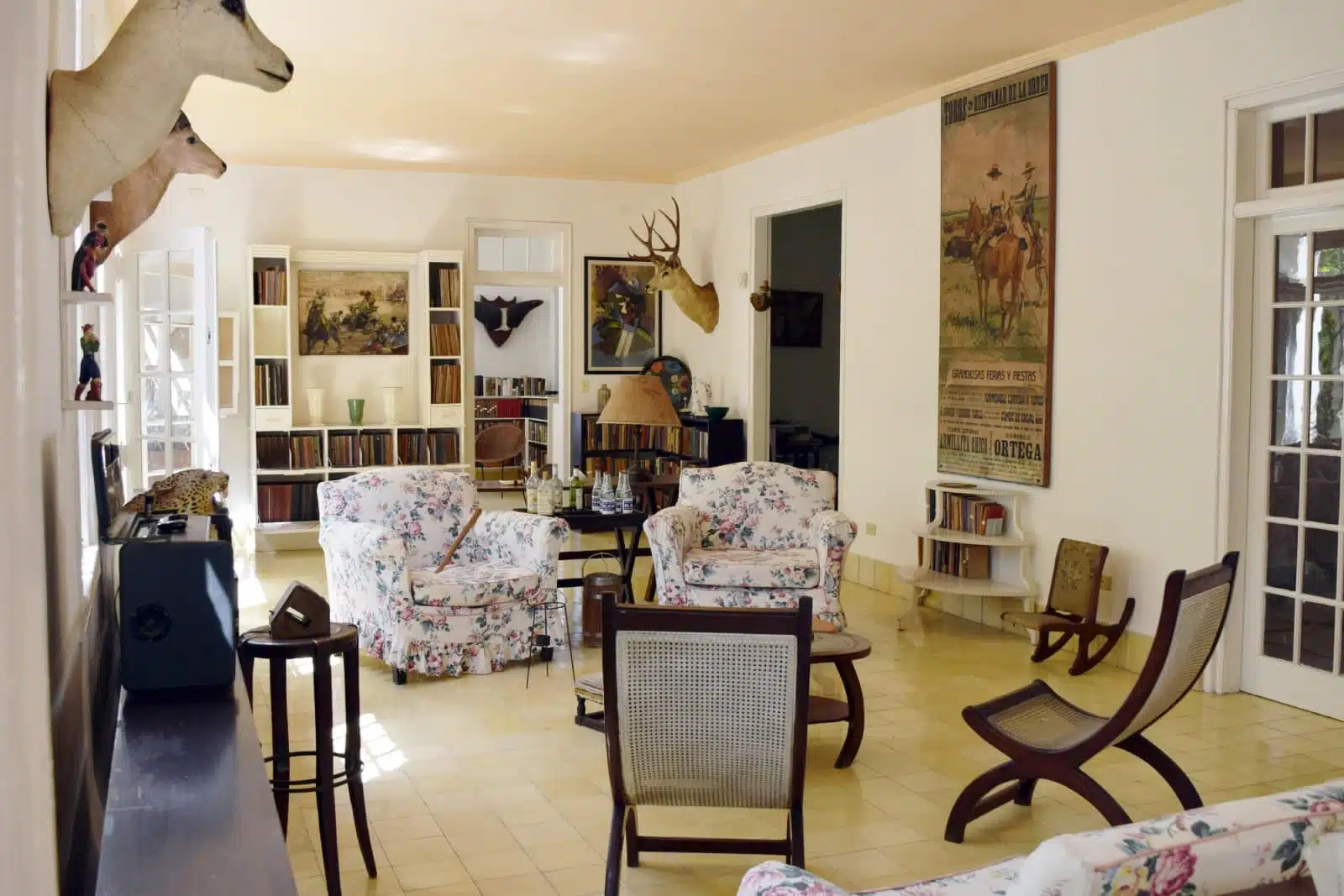
Image Credit: Shutterstock / Cabeca de Marmore
Ernest Hemingway, the Nobel Prize-winning author, made Havana his home for two decades, and his legacy is woven into the fabric of the city. Key sites include his residence, Finca Vigía, now a museum preserving his belongings as they were in his lifetime, and his favorite bars, La Bodeguita del Medio and El Floridita, where visitors can enjoy a mojito or daiquiri in the author’s memory.
Insider’s Tip: At Finca Vigía, instead of rushing through the main house, take time to explore the grounds, including Hemingway’s boat, Pilar, and the pet cemetery, to get a fuller picture of his life in Cuba.
When to Travel: Hemingway’s sites can be visited year-round, but the cooler, drier months from November to April offer the most pleasant climate for exploring both the city and the countryside.
How to Get There: Finca Vigía is located in the San Francisco de Paula suburb, about 15 km from central Havana, and is most easily accessed by taxi. La Bodeguita del Medio and El Floridita are in the heart of Old Havana, within walking distance of many other attractions.
8. The Great Theatre of Havana
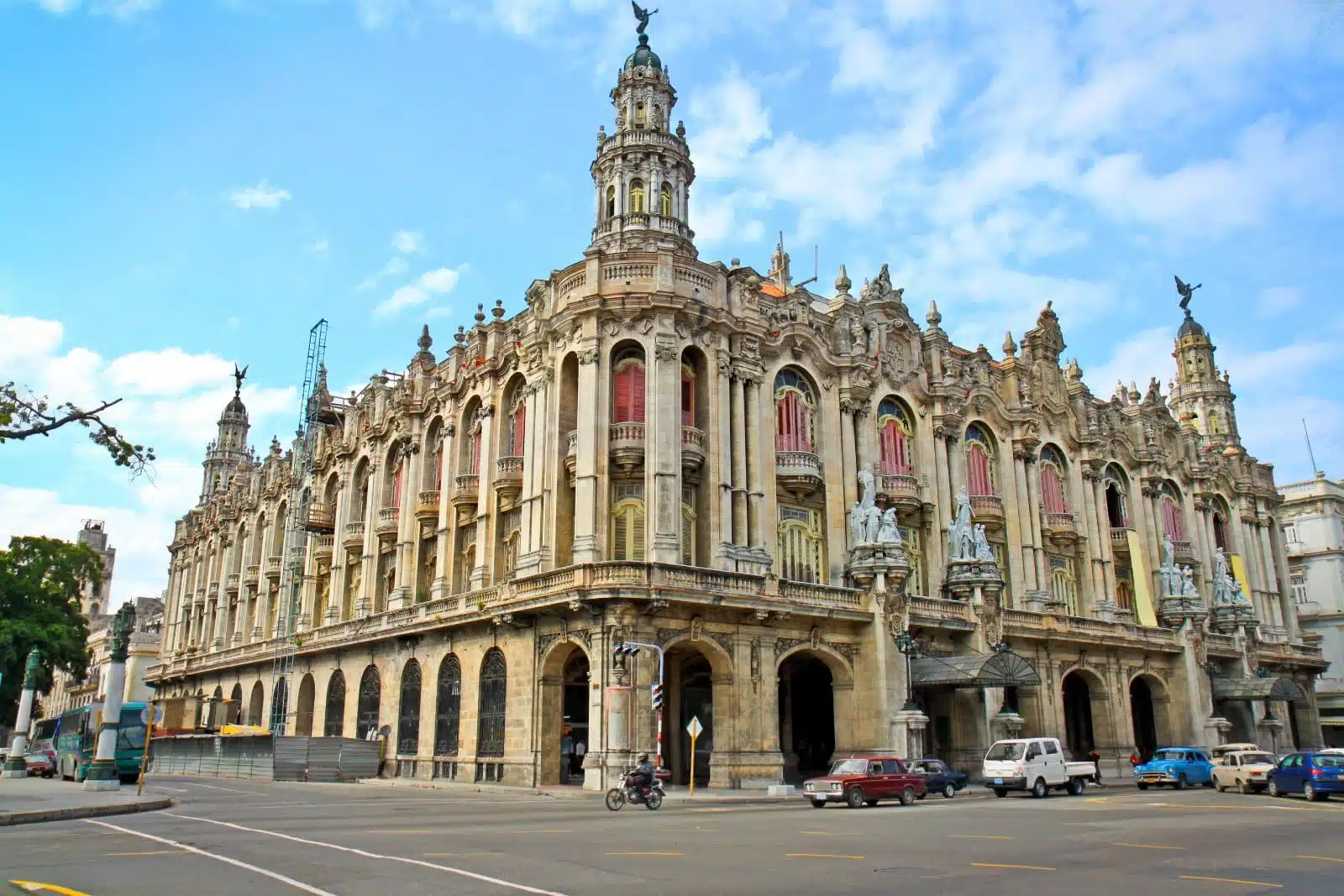
Image Credit: Shutterstock / Aleksandar Todorovic
The Gran Teatro de La Habana Alicia Alonso stands as a beacon of cultural sophistication in Havana, named after the legendary Cuban ballerina. This architectural masterpiece, with its opulent façade featuring sculptures of Greek gods and allegorical figures, is home to the Cuban National Ballet and hosts a variety of performances, including opera, ballet, and concerts. The interior is equally impressive, with lavish decoration and a grand staircase leading to the main theater, renowned for its excellent acoustics.
Insider’s Tip: Try to attend a performance by the Cuban National Ballet to experience the theater in its full glory. Tickets are surprisingly affordable and offer the chance to see world-class ballet in an iconic setting.
When to Travel: The theater has a year-round program, but it’s wise to check the schedule in advance and book tickets early, especially for performances by the Cuban National Ballet.
How to Get There: Located in the heart of Havana, near the Capitolio, the theater is easily accessible on foot, by taxi, or as part of a guided tour of the city’s cultural landmarks.
9. Museo de la Revolución
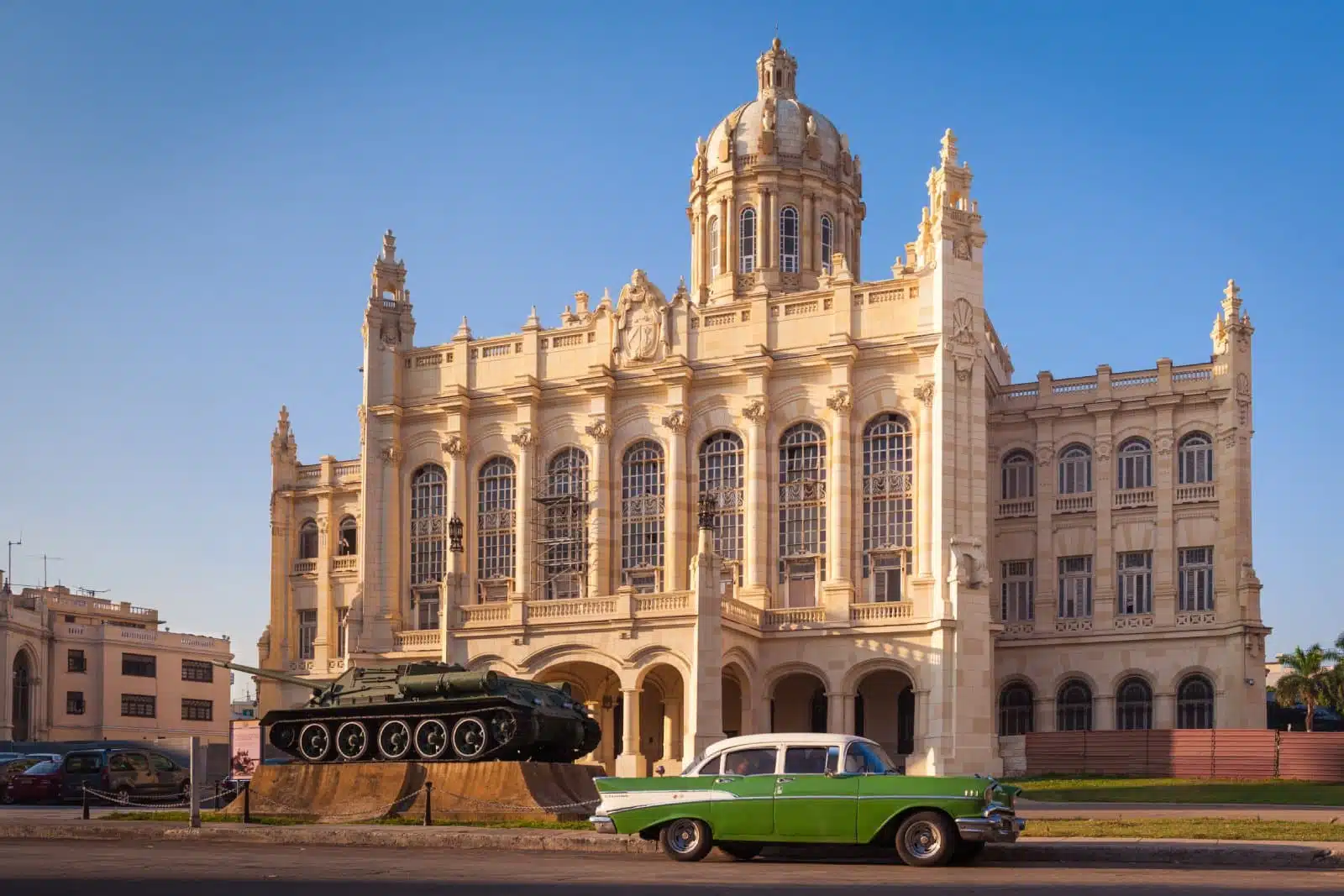
Image Credit: Shutterstock / Maurizio De Mattei
The Museo de la Revolución, housed in the former Presidential Palace, offers an immersive journey through Cuba’s tumultuous history, from pre-colonial times to the present day. The museum’s exhibits include personal belongings of key figures in the Cuban Revolution, historical documents, and artifacts, all narrated from a distinctly Cuban perspective. The building itself, with its bullet-riddled walls and grandiose interiors, tells a story of struggle and resilience.
Insider’s Tip: Don’t miss the Granma Memorial behind the museum, where the yacht used by Fidel Castro and his comrades to return to Cuba in 1956 is preserved under a glass enclosure.
When to Travel: Visiting during the cooler months from November to April offers a more comfortable experience, as the museum can get quite warm.
How to Get There: The museum is located in Old Havana, making it easily accessible by foot, taxi, or public transport from anywhere in the city.
10. Callejón de Hamel
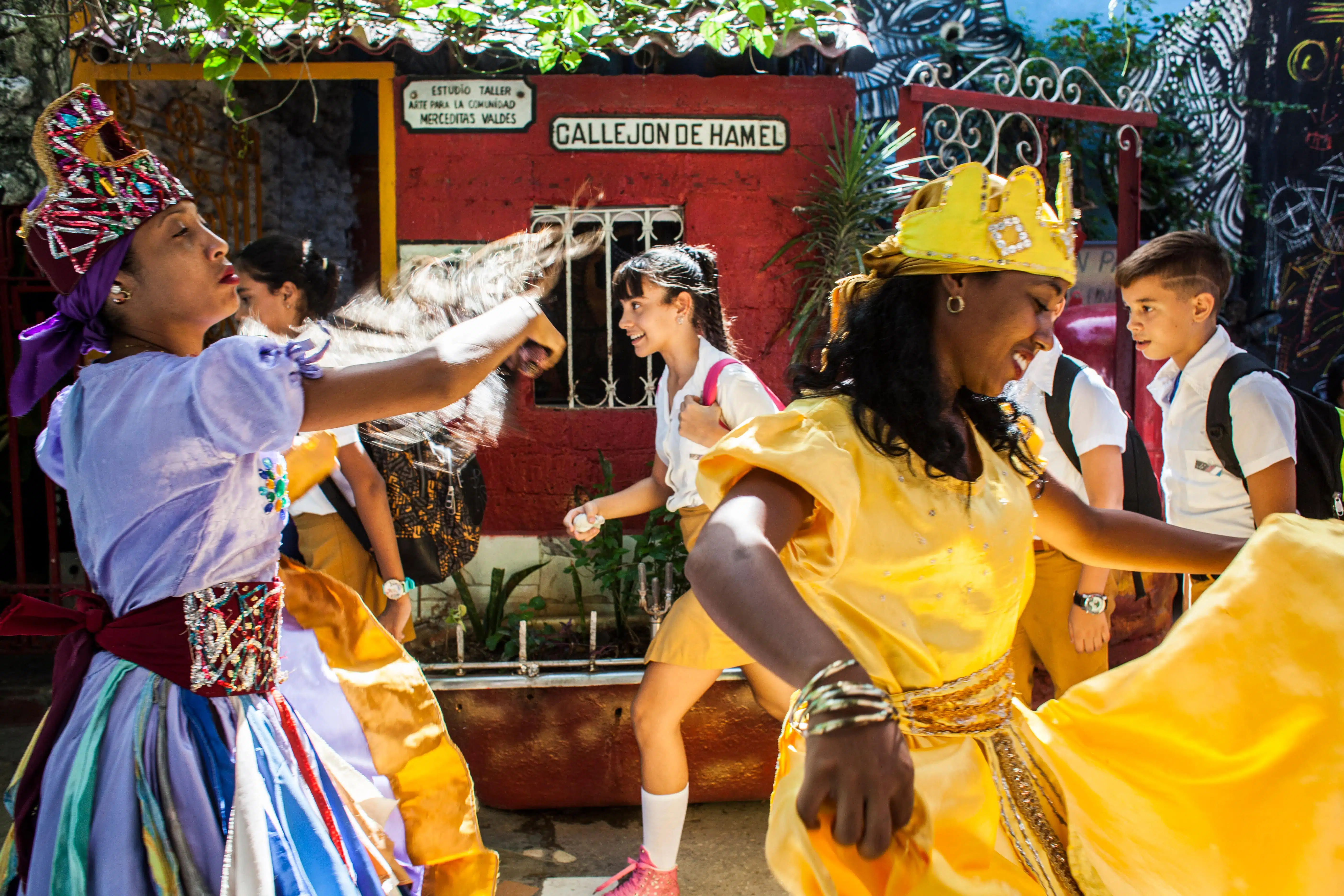
Image Credit: Shutterstock / Alvarfuente
Callejón de Hamel is a vibrant alleyway in central Havana, known for its Afro-Cuban murals and installations created by local artist Salvador González. This cultural project celebrates Santería (a syncretic religion of West African and Caribbean origin) through art, with colorful paintings and sculptures adorning every surface. The alleyway also hosts live rumba performances on Sundays, attracting a lively crowd of locals and tourists alike.
Insider’s Tip: Plan your visit on a Sunday to experience the energetic rumba performances, which highlight Havana’s cultural life and offer a deep dive into Afro-Cuban traditions.
When to Travel: While Callejón de Hamel can be visited any day of the week, the best time is for live music on Sundays. The cooler, drier months from November to April provide the most pleasant weather for enjoying outdoor performances.
How to Get There: Callejón de Hamel is located in the Cayo Hueso neighborhood, a short taxi ride from Old Havana or a longer, but manageable, walk for those interested in exploring more of the city.
11. Fabrica de Arte Cubano
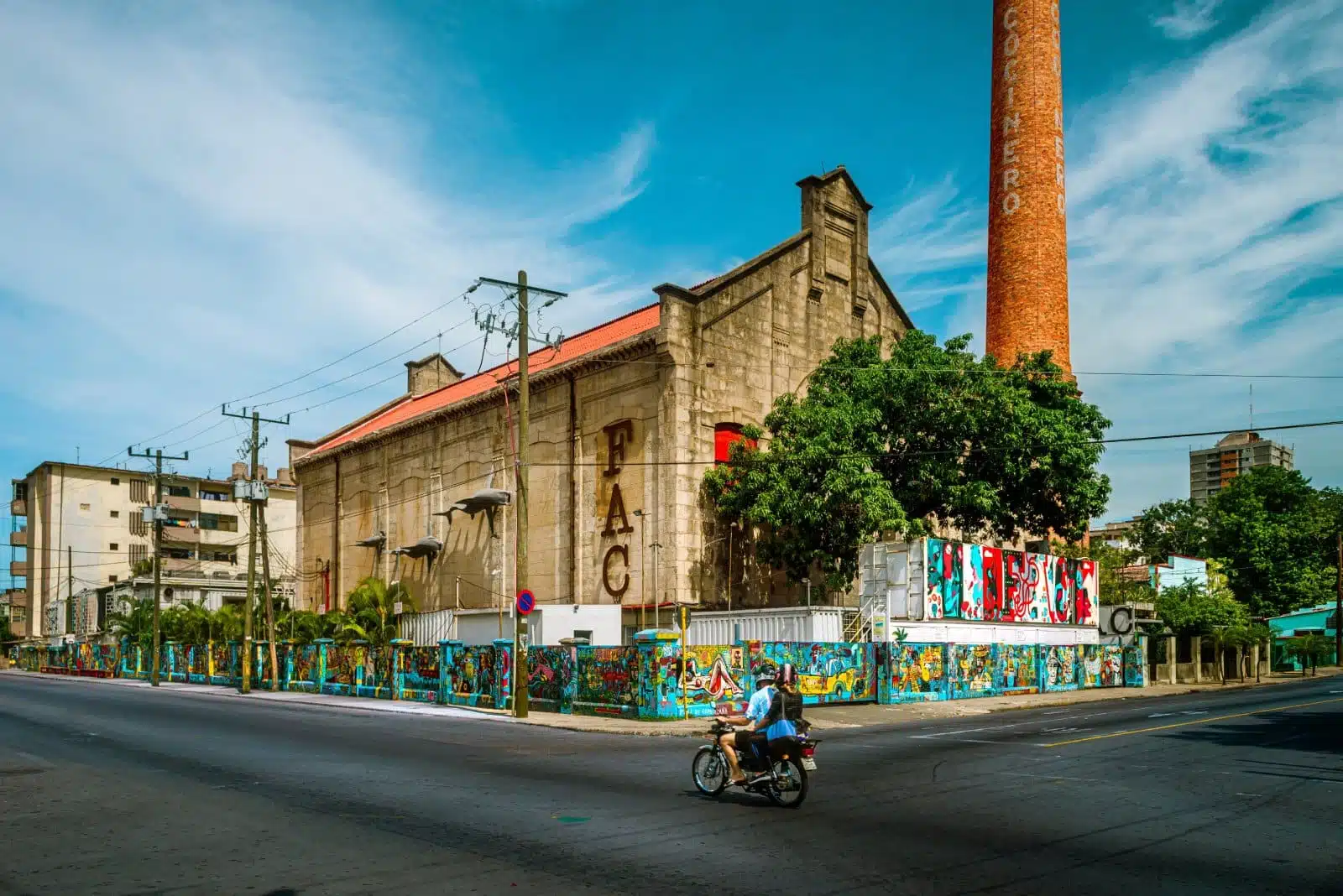
Image Credit: Shutterstock / Rey Cuba Photography
Fabrica de Arte Cubano (FAC) is a cutting-edge cultural venue that has transformed an old cooking oil factory into a multi-disciplinary space for art, music, dance, cinema, and more. FAC showcases the best of contemporary Cuban culture, offering a platform for emerging artists and musicians. The space is an ever-evolving art installation, with galleries, performance stages, and bars spread across its industrial setting.
Insider’s Tip: Check the schedule to catch live performances or special exhibitions. Arrive early to avoid the queues, especially on weekends, and give yourself plenty of time to explore the different spaces.
When to Travel: FAC is open from Thursday to Sunday, making the weekend the best time to experience its vibrant atmosphere. The venue is particularly popular with locals and tourists, so visiting outside peak holiday seasons can make for a less crowded experience.
How to Get There: Located in the Vedado district, FAC is best reached by taxi from Old Havana or other parts of the city. Its popularity means most taxi drivers will know it well.
12. El Morro Castle
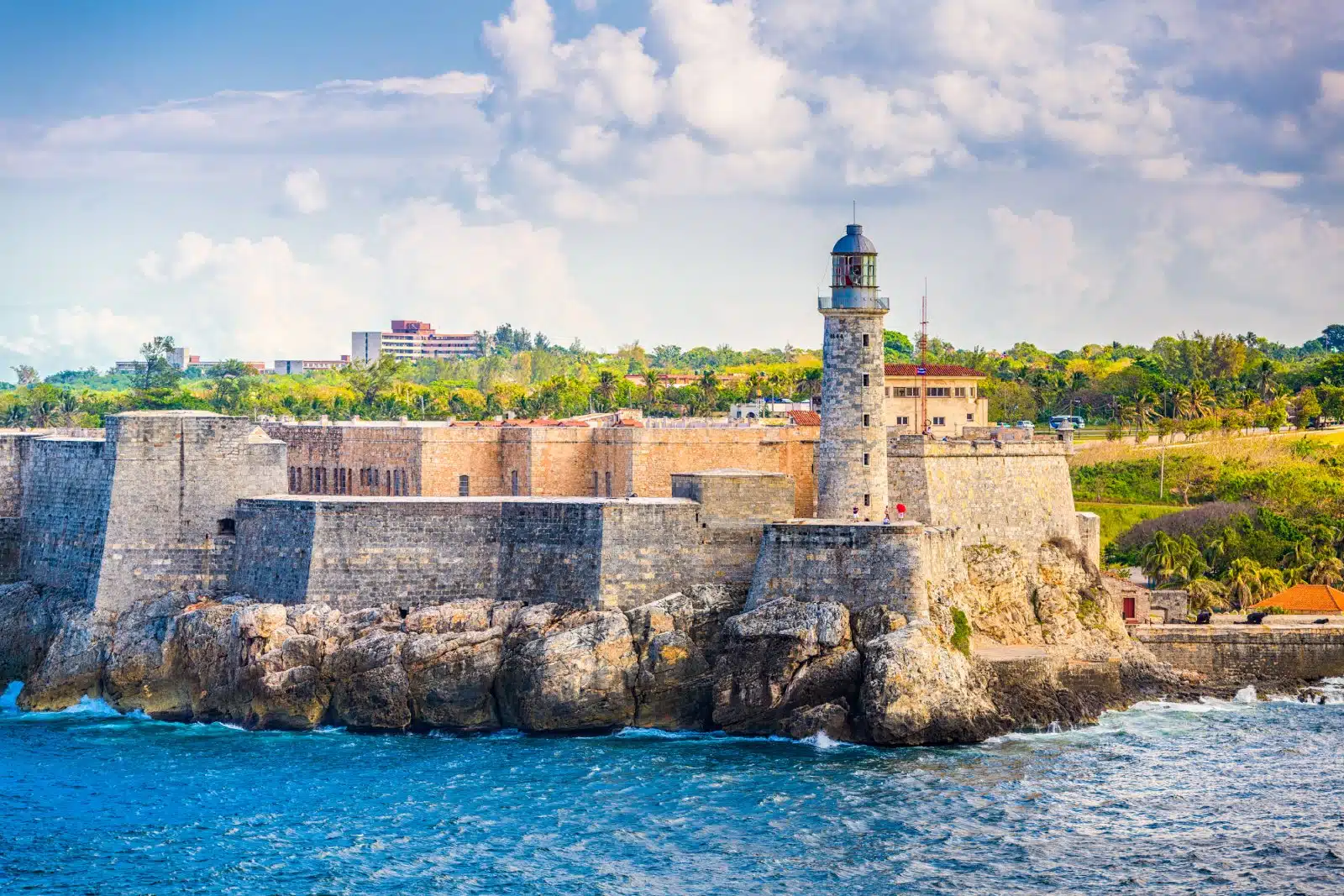
Image Credit: Shutterstock / Sean Pavone
The Castillo de los Tres Reyes Magos del Morro, known simply as El Morro, is a fortress guarding the entrance to Havana Bay. Constructed in the late 16th century as a defense against pirate attacks, it offers panoramic views of the Havana skyline and the sea. The castle features exhibitions on its military history, a lighthouse that is an iconic symbol of Havana, and ceremonial cannon firings at sunset.
Insider’s Tip: Time your visit to coincide with the cannon firing ceremony at 9 PM, a tradition dating back to the colonial era that marks the closing of the city gates. The ceremony offers a glimpse into Havana’s historical rituals and is a must-see event.
When to Travel: El Morro is open year-round, but the cooler months from November to April offer the most comfortable conditions for exploring the fortress and enjoying the views.
How to Get There: El Morro is located across the bay from Old Havana. It can be reached by taxiing around the bay or ferry from the Old Havana ferry terminal, followed by a short walk or taxi ride to the fortress.
13. Paseo del Prado
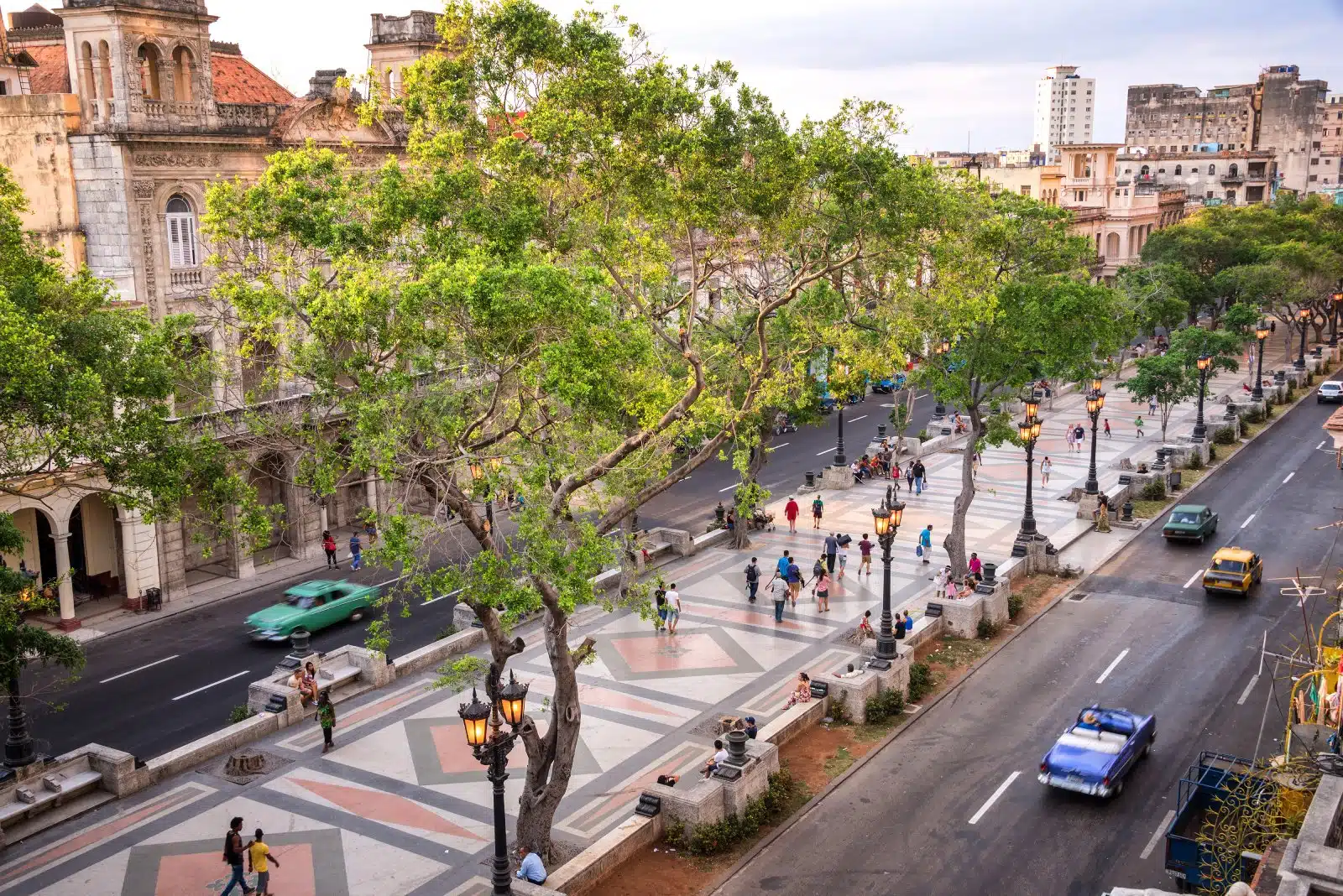
Image Credit: Shutterstock / Delpixel
The Paseo del Prado, also known as Paseo de Martí, is one of Havana’s most elegant boulevards, lined with marble benches, bronze lions, and shaded by trees. It stretches from the Central Park to the Malecón, acting as the city’s cultural and social axis. The boulevard is flanked by impressive buildings, including theaters, hotels, and residences, showcasing a range of architectural styles from neoclassical to Art Deco.
Insider’s Tip: Take a leisurely stroll in the late afternoon when the light softens, and the Prado comes alive with artists, dancers, and musicians, offering a spontaneous showcase of Havana’s vibrant street culture.
When to Travel: The Paseo del Prado can be enjoyed year-round, but the ambiance is particularly pleasant during the cooler, less humid months from November to April.
How to Get There: The Paseo del Prado is centrally located and easily accessible on foot from many parts of Havana, including Old Havana and the Malecón. It’s also a pleasant walk from the Capitolio, making it a natural continuation of a city tour.
14. The Great Theatre of Havana Alicia Alonso
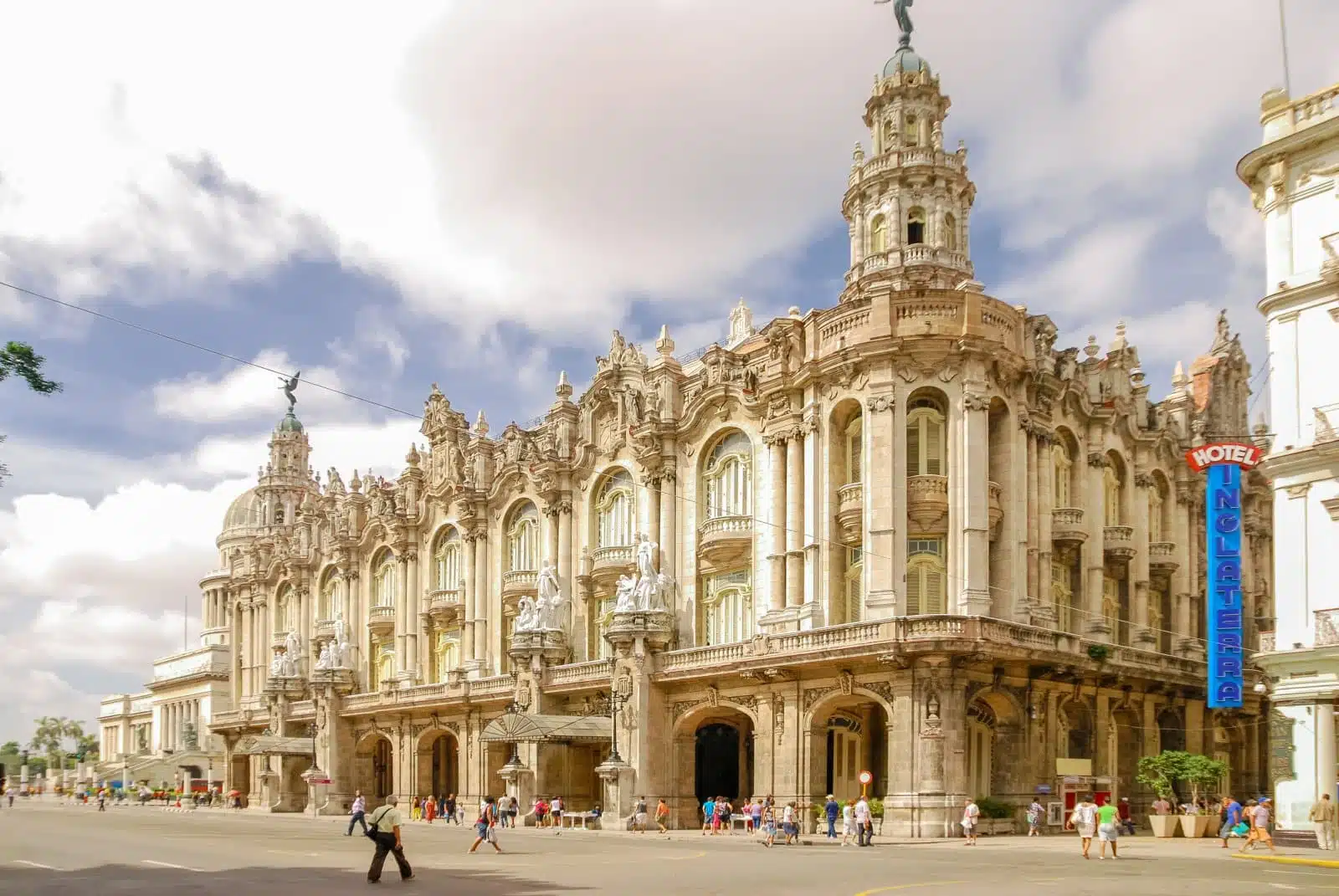
Image Credit: Shutterstock / Studio MDF
The Great Theatre of Havana Alicia Alonso, named after the legendary Cuban prima ballerina, stands as a beacon of cultural sophistication and architectural beauty. This opulent building, with its grand façade featuring sculptures of Greek gods and intricate stonework, is home to the Cuban National Ballet and hosts a variety of performances, including ballet, opera, and musical concerts. The theater’s interior is equally impressive, with lavish decorations, a magnificent auditorium, and excellent acoustics, making it a premier venue for the performing arts in Cuba.
Insider’s Tip: To fully appreciate the theater’s grandeur, attend a performance of the Cuban National Ballet if possible. Tickets are surprisingly affordable, offering the chance to experience world-class ballet in an unforgettable setting. Additionally, guided tours of the theater are available, providing insights into its history and architecture.
When to Travel: The theater’s schedule varies, so it’s best to check for performances during your visit in advance. The cooler months from November to April are ideal for visiting Havana, offering a comfortable climate for enjoying evening performances.
How to Get There: Located in the heart of Havana, near the Capitolio and Central Park, the theater is easily accessible on foot from many parts of the city. Taxis are also readily available for those staying further away.
The Bottom Line
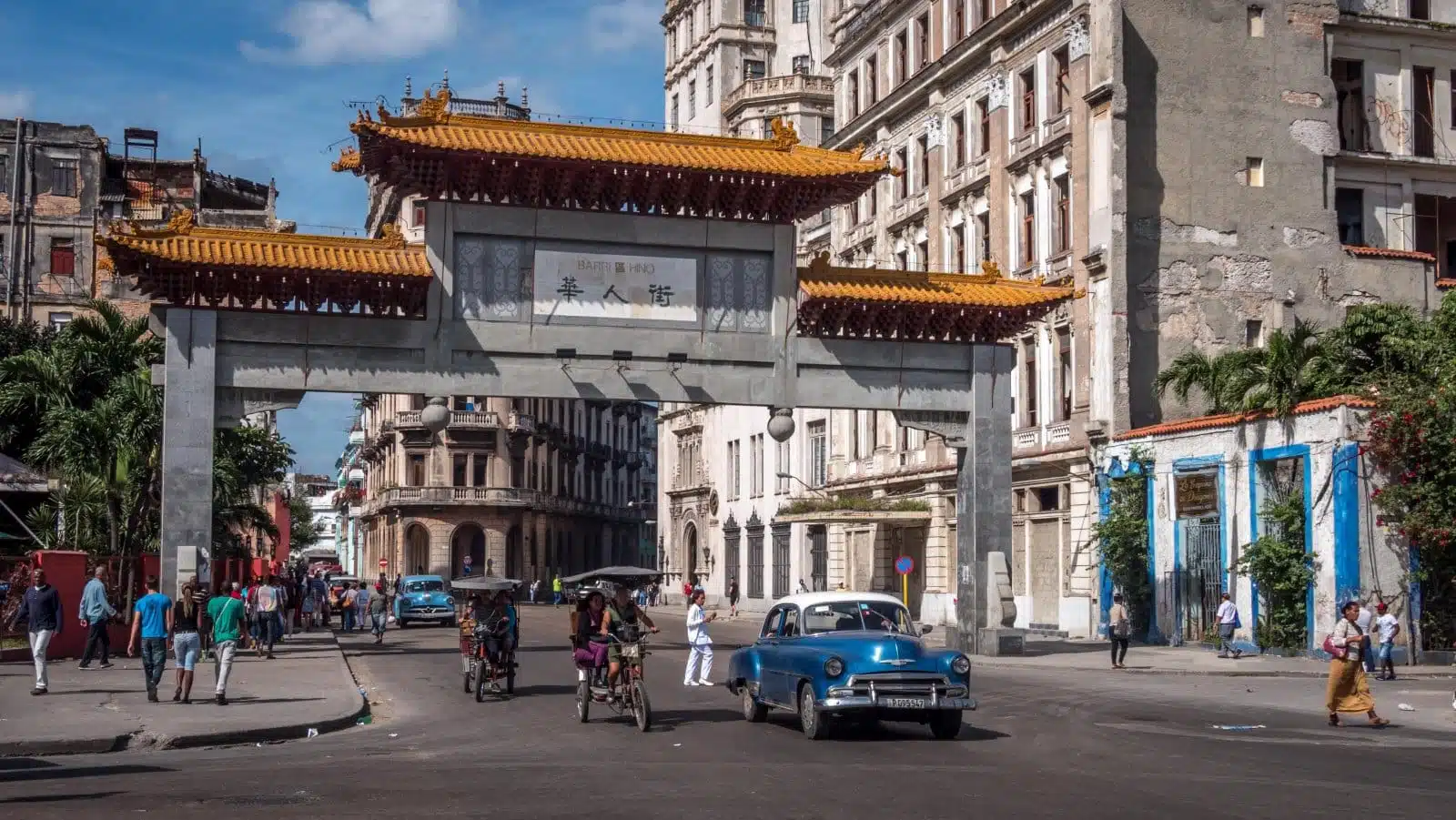
Image Credit: Shutterstock / jakubtravelphoto
Havana is a city that defies simple categorization and is rich in history, culture, and natural beauty. From the tranquil beaches of Playas del Este to the historic halls of the Hotel Nacional and the vibrant streets of Chinatown, Havana offers endless opportunities for exploration and discovery. Each visit reveals new layers, stories, and connections, inviting travelers to return and delve even deeper. As you navigate this extraordinary city, let curiosity be your guide, and you’ll find that Havana’s true essence lies in the warmth of its people and the richness of its cultural tapestry.
More From The Green Voyage
Top 10 Trending Travel Destinations 2024
6 Essential Banking Apps for International Travel – Managing Your Finances on the Go
Traveling With Kids – 10 Tips to Create Memorable Family Holidays
The post A City Guide to Havana, Cuba first appeared on The Green Voyage.
Featured Image Credit: Shutterstock / unverdorben jr.
For transparency, this content was partly developed with AI assistance and carefully curated by an experienced editor to be informative and ensure accuracy.
Tips for Trip Success
Book Your Flight
Find an inexpensive flight by using Kayak, a favorite of ours because it regularly returns less expensive flight options from a variety of airlines.
Book Your Hotel or Special Accommodation
We are big fans of Booking.com. We like their review system and photos. If we want to see more reviews and additional booking options, we go to Expedia.
You Need Travel Insurance!
Good travel insurance means having total peace of mind. Travel insurance protects you when your medical insurance often will not and better than what you get from your credit card. It will provide comprehensive coverage should you need medical treatment or return to the United States, compensation for trip interruption, baggage loss, and other situations.Find the Perfect Insurance Plan for Your Trip
